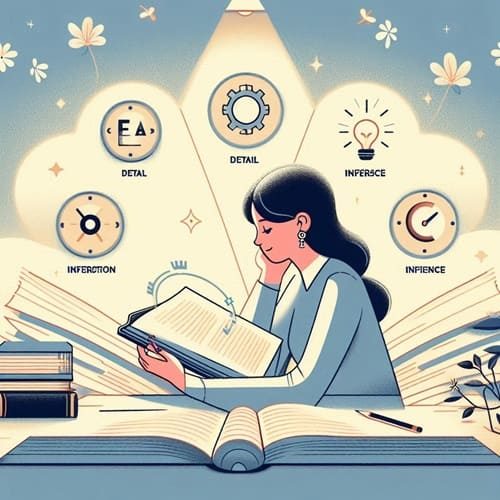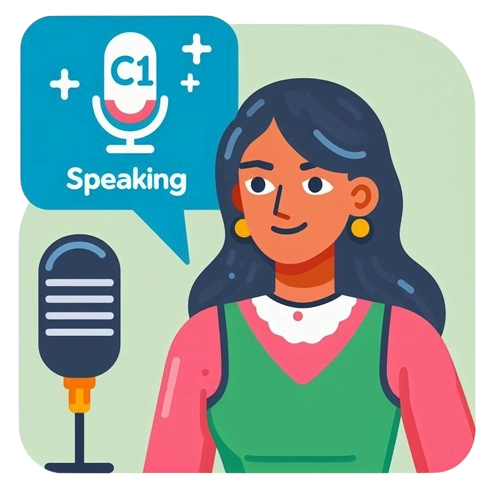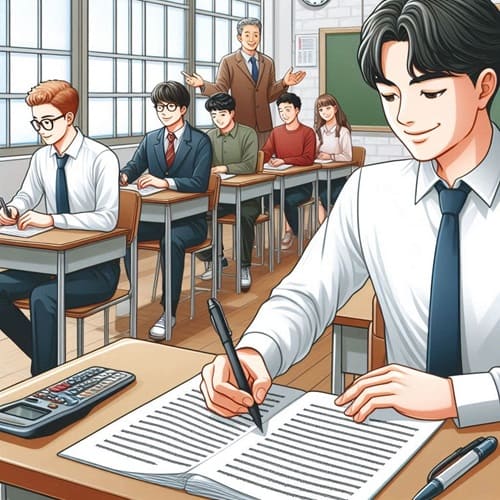Cambridge C1 (CAE): Reading and Use of English Part 6

Key Points
The Task Structure: Part 6, the cross-text multiple matching task, involves reading four short texts on a related theme and answering four questions that require comparing and contrasting the opinions and attitudes expressed in the texts.
Strategies: Key strategies include reading questions first to identify keywords, carefully reading and underlining relevant sections in the texts, recognizing synonyms and paraphrasing, and managing your time effectively by practicing under timed conditions.
Avoid Common Mistakes: Be mindful of misinterpreting questions, overlooking key details, failing to recognize synonyms, and poor time management. Strategies to avoid these pitfalls include reading questions thoroughly, focusing on context, expanding your vocabulary, and practicing timed exercises.
What you will find in this guide:
Reading and Use of English Part 6
When preparing for the Cambridge C1 Advanced (CAE) exam, mastering the Reading and Use of English Part 6 can significantly boost your score. This part, known as the cross-text multiple matching task, is designed to test your ability to compare and contrast different viewpoints expressed in multiple texts. Understanding this part of the exam and developing effective strategies is crucial for success.
According to Cambridge, Part 6 is called The cross-text multiple matching task. This is a key component of the Reading and Use of English paper because it evaluates critical thinking and analytical skills. You need to be adept at understanding nuanced opinions and synthesizing information from different sources. This skill is invaluable not only for the exam but also for real-world situations where you need to process complex information quickly and accurately.
The Structure
Part 5 consists of four short texts, on a related theme, followed by multiple-matching prompts. In total, there are four questions. Candidates must read across texts to match a prompt to elements in the texts. The prompts require candidates to read across the four texts to understand the opinions and attitudes expressed in order to identify agreement and disagreement between the writers. The items only provide information on the subject of the opinion, not the opinion itself: this is for the candidate to identify. Candidates may need to identify an opinion expressed in one of the texts and then identify which other text shares or contradicts this opinion, or they may need to identify which text differs from the other three in terms of an expressed opinion.
Sample Question
Part 6
You are going to read extracts from articles in which four academics discuss the contribution the arts (music, painting, literature, etc.) make to society. For questions 37 – 40, choose from the academics A – D. The academics may be chosen more than once.
Mark your answers on the separate answer sheet.
The Contribution of the Arts to Society
A. Lana Esslett
The arts matter because they link society to its past, people to its inherited store of ideas, images and words; yet the arts challenge those links in order to find ways of exploring new paths and ventures. I remain sceptical of claims that humanity’s love of the arts somehow reflects some inherent inclination, fundamental to the human race. However, exposure to and study of the arts does strengthen the individual and fosters independence in the face of the pressures of the mass, the characterless, the undifferentiated. And just as the sciences support the technology sector, the arts stimulate the growth of a creative sector in the economy. Yet, true as this is, it seems to me to miss the point. The value of the arts is not to be defined as if they were just another economic lever to be pulled. The arts can fail every measurable objective set by economists, yet retain their intrinsic value to humanity.
B. Seth North
Without a doubt, the arts are at the very centre of society and innate in every human being. My personal, though admittedly controversial, belief is that the benefits to both individuals and society of studying science and technology, in preference to arts subjects, are vastly overrated. It must be said, however, that despite the claims frequently made for the civilising power of the arts, to my mind the obvious question arises: Why are people who are undeniably intolerant and selfish still capable of enjoying poetry or appreciating good music? For me, a more convincing argument in favour of the arts concerns their economic value. Needless to say, discovering how much the arts contribute to society in this way involves gathering a vast amount of data and then evaluating how much this affects the economy as a whole, which is by no means straightforward.
C. Heather Charlton
It goes without saying that end-products of artistic endeavour can be seen as commodities which can be traded and exported, and so add to the wealth of individuals and societies. While this is undeniably a substantial argument in favour of the arts, we should not lose sight of those equally fundamental contributions they make which cannot be easily translated into measurable social and economic value. Anthropologists have never found a society without the arts in one form or another. They have concluded, and I have no reason not to concur, that humanity has a natural aesthetic sense which is biologically determined. It is by the exercise of this sense that we create works of art which symbolise social meanings and over time pass on values which help to give the community its sense of identity, and which contribute enormously to its self-respect.
D. Mike Konecki
Studies have long linked involvement in the arts to increased complexity of thinking and greater self-esteem. Nobody today, and rightly so in my view, would challenge the huge importance of maths and science as core disciplines. Nevertheless, sole emphasis on these in preference to the arts fails to promote the integrated left/right-brain thinking in students that the future increasingly demands, and on which a healthy economy now undoubtedly relies. More significantly, I believe that in an age of dull uniformity, the arts enable each person to express his or her uniqueness. Yet while these benefits are enormous, we participate in the arts because of an instinctive human need for inspiration, delight, joy. The arts are an enlightening and humanising force, encouraging us to come together with people whose beliefs and lives may be different from our own. They encourage us to listen and to celebrate what connects us, instead of retreating behind what drives us apart.
Which academic
37- has a different view from North regarding the effect of the arts on behaviour towards others?
38- has a different view from Konecki on the value of studying the arts compared to other academic subjects?
39- expresses a different opinion to the others on whether the human species has a genetic predisposition towards the arts?
40- expresses a similar view to Esslett on how the arts relate to demands to conform?
Potential Challenges
When tackling Cambridge C1 Reading and Use of English Part 6, it’s easy to fall into certain traps that can significantly impact your performance. Here are some common pitfalls and how you can avoid them.
1. Misinterpreting Questions
One of the most common mistakes is misinterpreting what the question is asking. Each question in Part 6 requires you to identify which text expresses a specific opinion or attitude. Misreading or not fully understanding the question can lead to incorrect answers.
How to Avoid:
- Read Carefully: Make sure you read each question thoroughly. Look for keywords that indicate the specific opinion or attitude you need to find.
- Underline Key Points: Highlight or underline the key parts of the question to ensure you know exactly what to look for in the texts. This helps you stay focused and reduces the chance of misinterpretation.
2. Overlooking Key Details
Another pitfall is skimming the texts too quickly and missing crucial details. While skimming is a useful technique, it’s essential to balance it with careful reading to catch all relevant information.
How to Avoid:
- Focus on Context: Pay attention to the context in which opinions are expressed. Sometimes, the true meaning of a statement is only clear when you consider the surrounding text.
3. Failing to Recognize Synonyms and Paraphrasing
Cambridge examiners often use synonyms and paraphrased expressions to test your vocabulary and comprehension skills. Not recognizing these can lead to mistakes.
How to Avoid:
- Expand Your Vocabulary: Regularly practice with vocabulary exercises to improve your ability to recognize synonyms and paraphrasing.
- Practice with Real Tests: Use practice tests to get used to the way examiners phrase questions and answers. Familiarize yourself with common synonyms and paraphrasing techniques used in the exam.
4. Time Management Issues: Many students struggle with managing their time effectively during the exam. Spending too much time on one question can leave you with insufficient time to complete the rest.
How to Avoid:
- Time Allocation: Allocate a specific amount of time for each part of the exam. For Part 6, try to spend no more than 15 minutes. This gives you enough time to read, analyze, and answer the questions without rushing.
- Practice Timed Exercises: Regularly practice under timed conditions. This helps you get used to the pressure and improves your time management skills
Guide to Part 6
Step 1:
Don’t read the paragraphs, skip them and go directly to the questions. Read the given question to see what you should be looking for.
Step 2:
Identify the keyword in the question to know what the question asks you to identify. In most cases, the questions ask you to identify a different or similar opinion in other paragraphs. So, keywords will help you stay focused on those ideas.
Step 3:
Since you are looking for how an idea expressed in one paragraph differs, or is similar, to another idea in a different paragraph, you have to read the paragraph the question is referring to. So, read the paragraph carefully and underline a part of that paragraph that the idea you are looking for is presented. Focus on that idea and make sure to understand it.
Step 4:
Now that you know what the idea is, you should look for similar or different ideas (according to the questions) in other paragraphs. So, scan the other paragraphs for the idea you are looking for and read the parts where that idea is discussed, or just read the whole paragraph. Once you find related ideas, underline them to make sure you can focus on those parts. Do this for the other 3 paragraphs and look for a different or similar idea.
Step 5:
One you have found the ideas, it is time to use your logic and choose which paragraph should be chosen as the correct answer.
Strategies for Success
1. Establish a Reading Routine: Start preparing as early as possible by integrating English reading into your daily routine. This could include reading news articles, academic papers, or literature that challenges your comprehension skills. The more exposure you have to complex texts, the better prepared you will be.
2. Skimming and Scanning: Develop your skimming and scanning techniques to quickly identify key points and opinions in each text. Skimming will help you get a general idea of the content, while scanning allows you to find specific information related to the questions.
3. Identify Paraphrasing and Synonyms: Cambridge examiners often use synonyms and paraphrased expressions to test your vocabulary and understanding. Practice recognizing different ways of expressing the same idea, as this will help you match opinions accurately.
4. Compare and Contrast: When answering the questions, focus on comparing the opinions expressed in each text. Highlight or note down the main points and attitudes of each writer to make it easier to identify similarities and differences.
5. Practice with Sample Tests: Use official Cambridge practice materials and sample tests to familiarize yourself with the format and types of questions you will encounter. This will also help you improve your timing and accuracy under exam conditions.
By following these strategies and dedicating time to practice, you can enhance your performance in the Reading and Use of English Part 6. This will not only help you achieve a higher score on the CAE exam but also improve your overall English reading and comprehension skills.
Practice Test
Use the guide to practice Reading and Use of English Part 6 using the following sample test.
You are going to read extracts from an article in which four artists give their views on the creative process. For questions 37-40, choose from the artists A-D. The artists may be chosen more than once.
Mark your answers on the separate answer sheet.
The artist at work
Four artists give their views on how they create their work.
A
When you convert something from the real world into a painting, it has to function within the painting. And when it comes down to it, everything is a form of geometry on a flat surface, so when I look at something and consider using it in a painting, I spend ages trying to make sure that the geometry will work. With one object, I might see pretty quickly how to compose the painting, but I might reject another one because it just doesn’t seem right. Then I work out how to gel from that starting point to the finished painting. At the back of my mind, there’s always the nagging thought that really,l want people to look at the finished painting and make some sense of it, regardless of what that is. AII in all, I’m under so much self-imposed pressure while I’m working that it’s a great relief when a painting is finished.
B
What my drawings depict doesn’t concern me as much as drawing them. I’m just not interested in knowing about, say, what images tell us. That cat, those stairs, this or that tree is really just a support for the drawing itself. They’re all chosen pretty arbitrarily, as a means to a drawing’s own end. People have the habit of reading an image, but my activity is different from that of a reader. This really works for me when the drawing itself is allowed to appear slowly on behalf of the things it depicts. I really let the painting evolve in its own way, until I realise that it’s complete. I’m always surprised how tense I feel while I’m painting, though – it’s a bit like giving birth. And when I finish, it generally takes me days to recover.
C
People often describe my paintings as abstract. I don’t consider them abstract because I’m working from a somewhat indistinct and hazy place towards a very specific and concrete image. I’m constructing an image from an object or shape that has to mean something to me, though it may be nothing to other people, and I try to define it very clearly, so it becomes legible. But if in the end people can’t see it as I do, so be it. After making that initial choice, I let the painting itself take over – it’s a very spontaneous process. I usually feel as though I’m in the hands of the painting, almost its slave, having to do whatever it requires, however unreasonable it seems at the time. When the painting’s complete, I have a strong emotional reaction, a kind of euphoria at having survived.
D
I’m usually surprised by how my paintings turn out, because I don’t feel exert control over what happens. The subject slips away if you try to grab it. When I paint a real place, it’s less a celebration of the ordinary than a demonstration of the idea that by painting something that is apparently nothing, it has the opportunity to become everything in the eyes of anyone who sees it. I suppose that’s one of my motives for painting – to make people observe. Why I happened to paint this place rather than that has no significance – it could simply be finding somewhere to sketch without being run over (I usually sketch in the street). It’s what I do with it then that matters. I know artistic creation is often seen as a struggle with something inside; well, for me it’s almost the reverse, almost a relaxation – painting is an escape from the demands of everyday life.
Which artist
37- shares artist C’s opinion on whether other people should share the artist’s interpretation of their paintings?
38- expresses the same opinion as artist D regarding the choice of subject matter?
39- has a different opinion from artist C on how they experience the act of painting?
40- expresses a different view from the others on whether the painting process should be consciously planned?
References
How was your experience?
Describe your experience taking Reading and Use of English Part 6 in the comment section below.







It was a challenge for me because I get confused when I believe that I have the answer I find another similar answer 😥 but I will continue practicing
It was so difficult because we hace to read everything to try to find the answers. 😞
From my experience, this part was difficult because I got confused with the ideas that each paragraph gave and ended up choosing the wrong answer. To be honest, it is still being hard for me to do it in the right way but with the tips, I will continue practicing more to improve 🙂